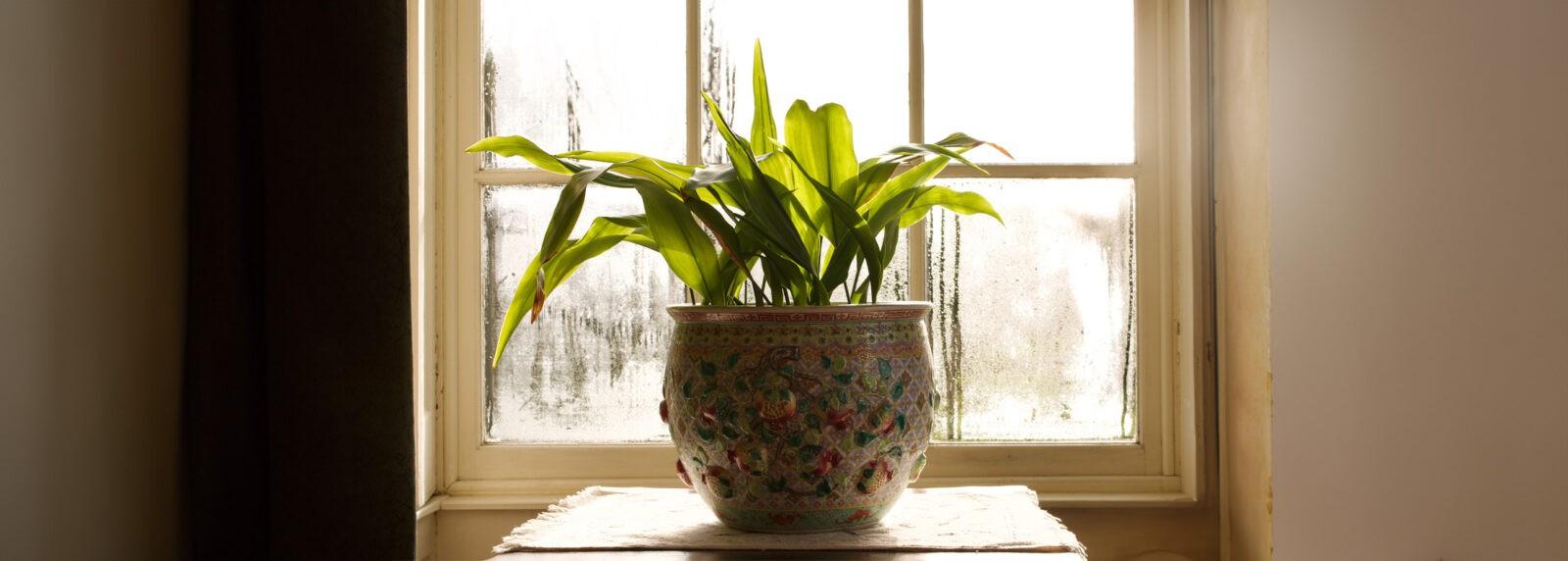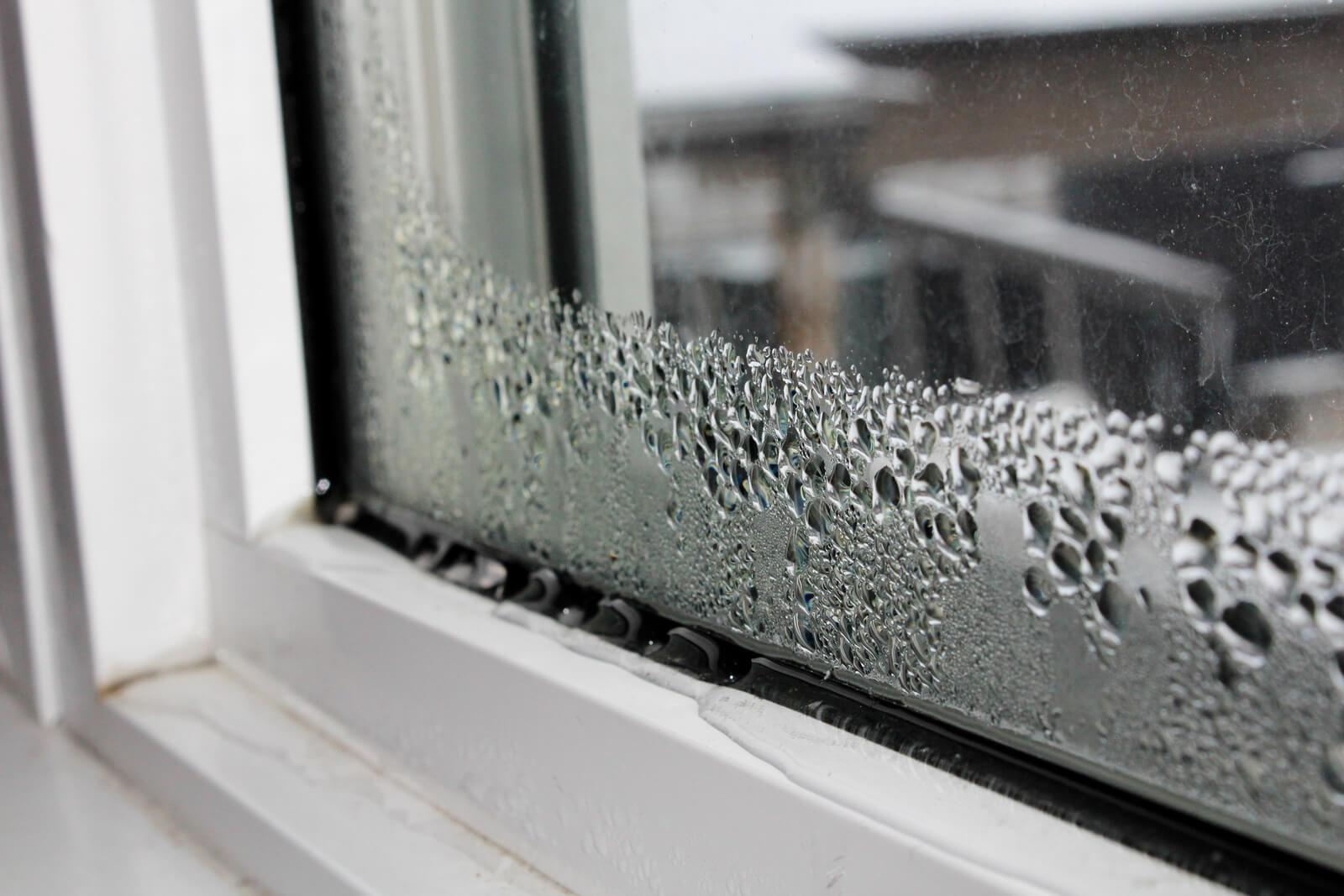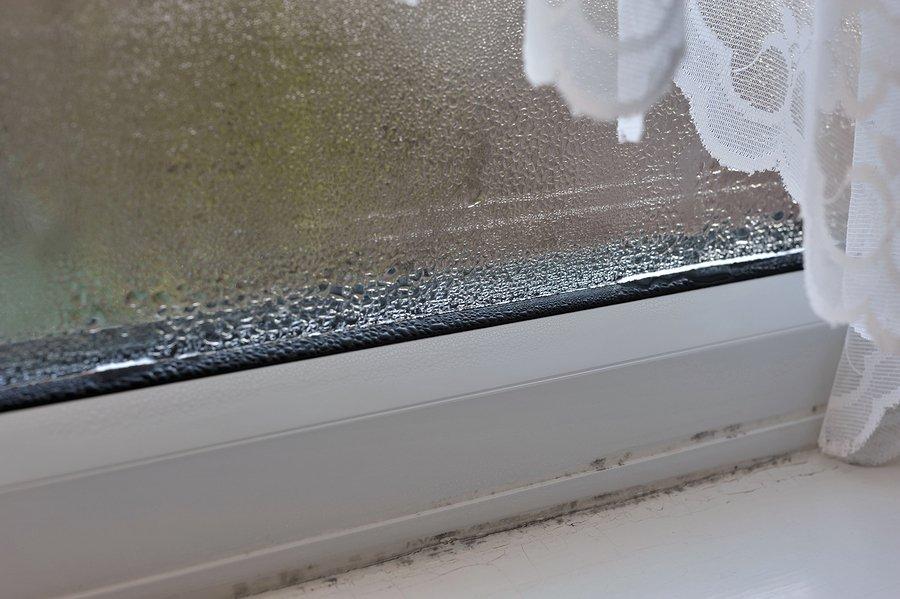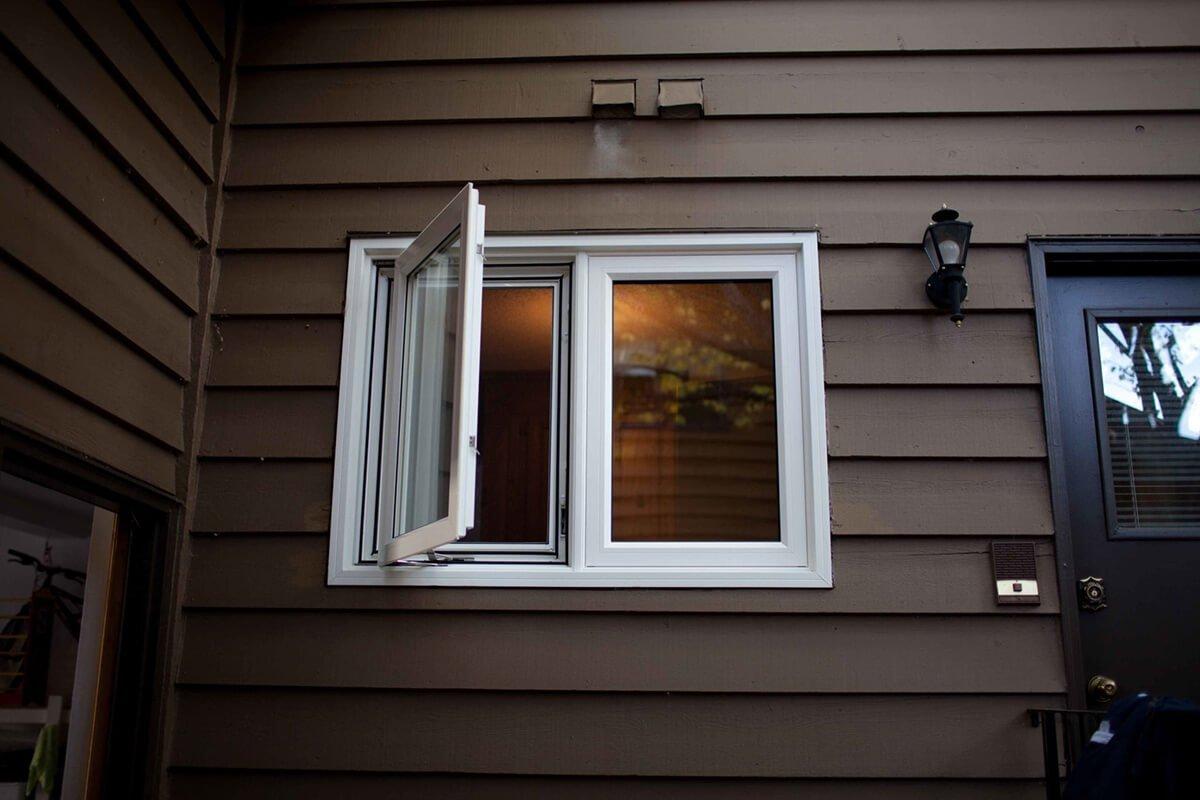
Condensation on Windows: How to Reduce and Prevent It [2024]
Jun 5, 2019
Aug 6, 2024
11 min read
1961
Whether it’s old or brand new windows, there is one problem that comes up in conversations with homeowners planning a replacement: condensation on windows.
If you have older windows that aren’t as efficient as modern vinyl windows, they are more likely to fog-up, accumulate moisture around the sill, or even freeze. But does this necessarily mean the window has to be replaced? What if the window has just been replaced and the condensation seems to be even worse than with the old windows?
We will show you how to understand and reduce or prevent condensation on your windows in this blog. In order to get there, we need to start at the beginning with the most basic question:
What is window condensation?
Condensation is the process which turns water vapour that is present in the air into liquid water. One of the biggest misconceptions that homeowners have about condensation is that it is a result of a problem with the surface on which it appears, usually a window or a wall.
While problems in these areas can arise as a result of prolonged moisture exposure, condensation actually comes from the air, or rather moisture in the air.
Why is there condensation on windows?
As the air in a room warms up, it expands allowing it to hold more moisture. As it cools down again, it contracts. When the air reaches a cooling saturation point, the excessive moisture turns into a liquid. This is exactly what happens when the warm air from the inside of your home comes in contact with the cold glass pane in your window. The air cools rapidly against the surface of the window pane and becomes water. That is what causes condensation on windows.
Although this is most noticeable on the glass, your windows aren’t the only place condensation can occur. Breaks in your house vapour barrier can allow warm moist air to leak into wall cavities, condensing there the same way it does on your windows.
Because this problem is not evident to the naked eye, it can go untreated for some time and result in rotting or mould growth over a period of time. This problem is especially prevalent in the older homes with house windows fogging up on the outside.


Condensation on inside of windows is most noticeable when the temperature outside drops quickly, creating a greater difference in temperature between the inside and outside air. It is often most noticeable in the early fall when the days are warm and nights are cold.
During a humid summer, the home’s structure can absorb a fair amount of moisture. When the temperature drops outside, this moisture becomes trapped inside the home, resulting in higher humidity levels and a higher chance of condensation on glass panes.
Where does excessive moisture in the air come from?
One of the biggest contributing factors to the excessive moisture in our homes is us. According to Natural Resources Canada:
- A family of four can add moisture equivalent to 30 or 40 litres of water per week to the atmosphere in your home.
- Showering, cooking, bathing, and washing can add 15 to 20 litres per week.
- Drying clothes indoors can add 10 to 15 litres per week.
Of course, another significant contributor to high levels of humidity is your household appliances and even your ventilation system. That’s why kitchens and bathrooms are areas with a higher chance of condensation.
During the wintertime, an appropriate level of humidity indoors is considered to be between 25 and 40%
How to avoid condensation on windows?
Exactly how to battle condensation in your home depends on just how much condensation there is, the condition of your existing windows, your vents, etc. In short, it is about balancing the airflow system in your entire home. As such, the right fix for your condensation problems may be in a combination of fixes.
In essence, preventing condensation is about three main factors: reduce the level of humidity in your home, vent the humid air out of your home, and circulate air inside your home properly to lower the and maintain appropriate humidity levels.
- Purchase a hygrometer. A hygrometer is a small and relatively cheap device that measures the humidity levels in your home. It can not only help you keep track of the humidity levels, but also help you assess whether different methods of battling condensation are working. Many modern thermostats come equipped with a humidity meter.
- Lower your thermostat. As we mentioned above, warmer air contains more moisture. If you are like most Canadian household, you can probably afford to turn the thermostat down a degree or two and still be comfortable. As a result, you may see a decrease in humidity and condensation.
- Use your fans. Your appliances, like the stove and dryer, can create a lot of humid air. Same goes for your shower. Make sure that these areas and appliances are vented to the outside of the house. Run a vent fan in your bathroom when you shower and turn on your range hood while cooking.
- Unblock your vents. A lot of times the biggest problem with airflow is a man-made one. Placing furniture above or directly in front of the vents prevents air from distributing properly, and affects the circulation in your rooms. Same goes for the return vent that takes the air back into the system. Ultimately it is all about making the air move through and around the whole house for best results.
- Clean your vents and change your filters. Dust on your vents or return grill can be a sign that the air moving around your home is not as clean as it should be. Physically cleaning the dust off can lead to increased airflow. Replacing or cleaning the air filter not only provides your family with cleaner breathing air, but it also makes your furnace run more efficiently. Some companies recommend changing the filter as often as every two to three weeks, so you may want to add it to the list of your regular chores. At the very least try to check on the health of your air filters monthly. This will be a good sign of their health and overall furnace performance.
- Seal leaky ducts. According to Energy Star, about 20% of the air that moves through the duct system is lost due to leaks, holes, and poor connections. That’s one-fifth of your heating bill disappearing into the ether. By redirecting, sealing off, or fixing the leaky ducts you can improve the flow of air and increase circulation.
- Circulate the air inside your home. As we said earlier, colder air means less humidity. One of the quickest ways to cool the air in your home is by simply opening a door or a window. This may not always be ideal because of the weather, but you should consider ventilating the air in your home daily, even if for a few minutes.
- Get a dehumidifier. One solution that seems to work well for everyone who experiences above normal condensation levels in their house is the use of dehumidifiers. These units are fairly cheap and you can find one that will do the job for 200-250$. This is also a good solution for homeowners with new windows that experience condensation, where other areas in the house may not be as significant in contributing to moisture on windows.
Preventing condensation on windows you might be asking yourself ‘How can I make my home more efficient?‘ There are many small and relatively simple home improvements you can make to have a positive impact on your personal comfort, the longevity of your home and the security of your budget.
Check out:
Humidity: Why It’s More Important Than Just Condensation on Windows
Does condensation on my windows means I need to replace them?
Is all condensation the same? There is a way to recognize “good” or “bad” condensation.
During the winter months, your windows will have condensation on the inside of the room. You should be able to wipe this condensation away with a finger. This condensation is a result of temperature differences between the outside and inside.
In the summertime, if condensation occurs, it will be on the outermost pane of your window as now your home is likely cooler than the warm air outside. This is also a result of the difference in temperature.
But there is one kind of condensation that means there is a problem with the window itself. If condensation occurs between the panes of the window (assuming the window is multi-pane) and you cannot wipe it away from the inside or outside, that means the seal in your insulated glass units is broken. A broken seal in the sealed unit means your windows are losing heat to the outside.
Unfortunately, there is no simple fix for this problem. Your insulated glass unit or the whole window will have to get replaced for it to function properly again.
Check out:
Broken Sealed Unit? Why A New Window May Cost You Less Than Repair
Condensation on new windows

We often get calls from people who recently purchased Ecoline windows claiming that their new windows have even more condensation than the old ones and that something is wrong with the unit, asking for warranty.
When they are properly installed, new windows create a better barrier to air exchange in and out of a home. A better barrier means more of a difference between the inside and outside air temperatures. When combined with the existing levels of humidity, this results in more condensation than when you had old drafty windows.
Condensation is also an issue that is prevalent in brand new homes. When modern homes are built, there is often a variety of wet materials or materials that contain higher levels of moisture that are used. Once the home is complete, these moist materials need some time to dry and adjust to the home.
If you are experiencing condensation on windows in a brand new home, do not be alarmed. Construction specialists suggest that it takes 8-10 months for a new home to settle and adjust.
Why window condensation is bad for your home?
So why all this fuss about some moisture on a window? Just wipe it away and forget it, right? Wrong.
While in the immediate condensation can be just an aesthetic problem, it is not something to be taken lightly in the long-run. Excessive moisture on windows tends to result in the water eventually damaging the frames or the wall structure around them.
When not addressed, moisture problems can lead to mould, fungus, and rotting wood. It isn’t just dangerous for the integrity of the structure, it isn’t good for the health of the people living in the house.
F.A.Q
Why do I get condensation on my windows in the winter?
Condensation on windows during winter occurs because warm, moist air inside the house comes into contact with the cold surface of the window glass. This causes the moisture in the air to cool and condense into water droplets. High indoor humidity levels, insufficient ventilation, and temperature differences between the inside and outside exacerbate this issue.
How to stop condensation on windows?
To stop condensation on windows, reduce indoor humidity by using dehumidifiers and exhaust fans in high-moisture areas like kitchens and bathrooms. Improve ventilation and lower your thermostat to reduce the air’s moisture-holding capacity. Regularly clean and seal window frames to prevent air leaks. If you experience severe condensation and moisture between window panes, your windows have a seal failure, and a full window replacement is recommended.
Why do old windows get condensation?
Old windows are more prone to condensation because they often lack proper insulation and sealing, allowing cold air to infiltrate and warm air to escape. This temperature difference causes moisture in the warm air to condense on the cold window surface. Over time, wear and tear also reduce the window’s efficiency, increasing the likelihood of condensation. To avoid this, experts recommend installing new triple-pane windows.








